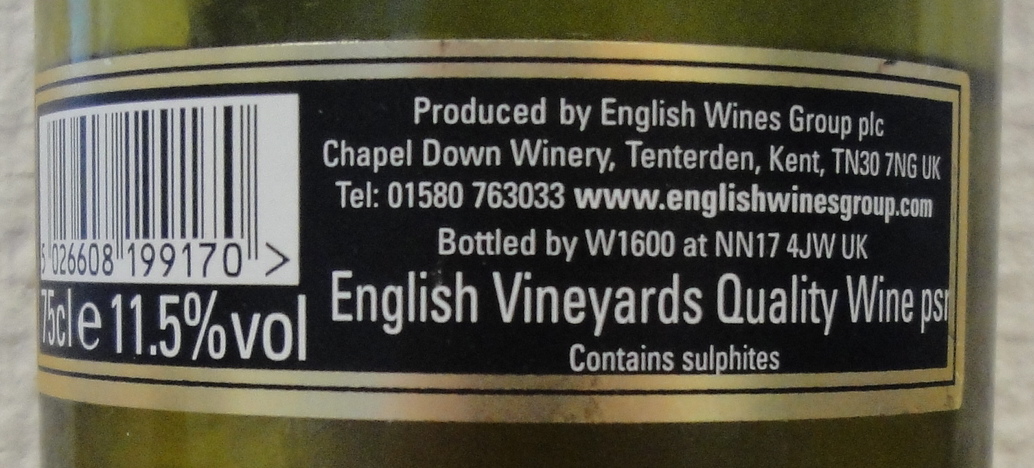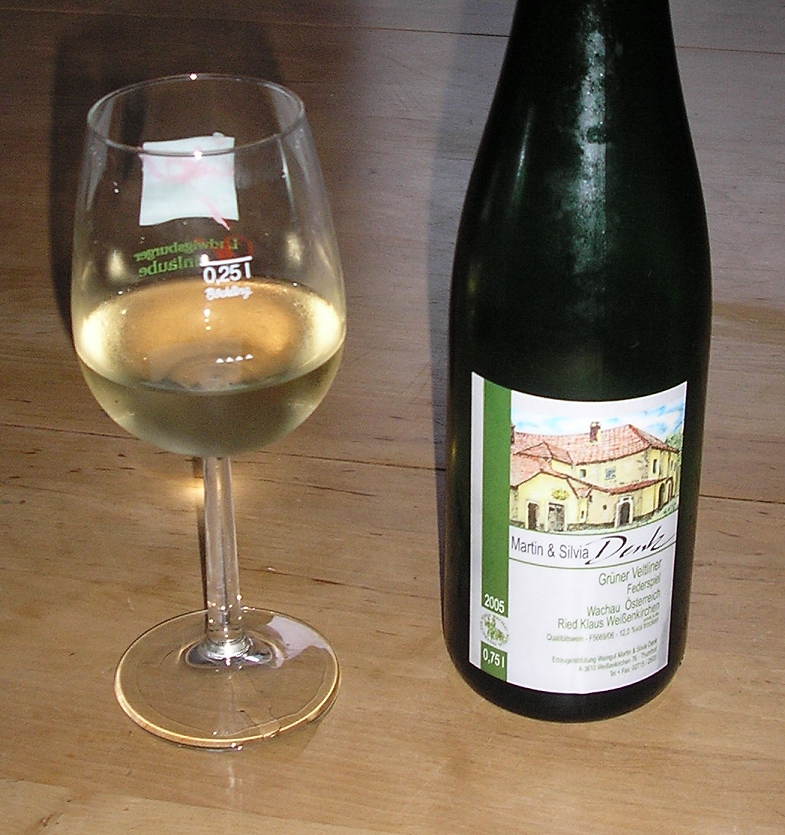|
QWpsr
Quality wines produced in specified regions (often abbreviated to quality wines psr, QWpsr or simply "quality wines") is a quality indicator used within European Union wine regulations. The QWpsr category identifies wines with protected geographical indications and protected designations of origin. The European Union regulates and defines the status of "quality wines" according to production method, management, and geographical location. Its original, fundamental role is in differentiating quality wines from table wines, broadly in line with the system traditionally employed by the French government, amended to account for the preferences and methodology of Italian, German, and other growers in the EU. History In 1962, shortly after the Treaty of Rome created the European Economic Community (EEC, or "Common Market") a set of rules were drawn up in which the normal common organisation of the market for a type of product – normally limited to a pricing system, rules on interv ... [...More Info...] [...Related Items...] OR: [Wikipedia] [Google] [Baidu] |
Table Wine
Table wine (rarely abbreviated TW) is a wine term with two different meanings: a style of wine and a quality level within wine classification. In the United States, the term primarily designates a wine style: an ordinary wine which is not fortified or expensive and is not usually sparkling. In the European Union wine regulations, the term is the lower of two overall quality categories, the higher of which is ''quality wines produced in specified regions'' (QWPSR). All levels of national wine classification systems within the EU correspond to either TW or QWPSR, although the terms that actually appear on wine labels are defined by national wine laws with the EU regulations as a framework. Most EU countries have a national classification called ''table wine'' in the country's official language. Examples include ''vin de table'' in France, ''vino da tavola'' in Italy, ''vino de mesa'' in Spain, ''vinho de mesa'' in Portugal, ''Tafelwein'' in Germany, and ''επιτραπέζιος ... [...More Info...] [...Related Items...] OR: [Wikipedia] [Google] [Baidu] |
Protected Geographical Indications In The European Union
Three European Union schemes of geographical indications and traditional specialties, known as protected designation of origin (PDO), protected geographical indication (PGI), and traditional specialities guaranteed (TSG), promote and protect names of agricultural products and foodstuffs. Products registered under one of the three schemes may be marked with the logo for that scheme to help identify those products. The schemes are based on the legal framework provided by the EU Regulation No 1151/2012 of the European Parliament and of the Council of 21 November 2012 on quality schemes for agricultural products and foodstuffs. This regulation applies within the EU as well as in Northern Ireland. Protection of the registered products is gradually expanded internationally via bilateral agreements between the EU and non-EU countries. It ensures that only products genuinely originating in that region are allowed to be identified as such in commerce. The legislation first came into forc ... [...More Info...] [...Related Items...] OR: [Wikipedia] [Google] [Baidu] |
Chaptalisation
Chaptalization is the process of adding sugar to unfermented grape must in order to increase the alcohol content after fermentation. The technique is named after its developer, the French chemist Jean-Antoine-Claude Chaptal. This process is not intended to make the wine sweeter, but rather to provide more sugar for the yeast to ferment into alcohol. Chaptalization has generated controversy and discontent in the French wine industry due to advantages that the process is perceived to give producers in poor-climate areas. In response to violent demonstrations by protesters in 1907, the French government began regulating the amount of sugar that can be added to wine. Chaptalization is sometimes referred to as enrichment, for example in the European Union wine regulations specifying the legality of the practice within EU. The legality of chaptalization varies by country, region, and even wine type. In general, it is legal in regions that produce grapes with low sugar content, such ... [...More Info...] [...Related Items...] OR: [Wikipedia] [Google] [Baidu] |
Austrian Wine
Austrian wines are mostly dry white wines (often made from the Grüner Veltliner grape), though some sweeter white wines (such as dessert wines made around the Neusiedler See) are also produced. About 30% of the wines are red, made from Blaufränkisch (also known as Lemberger, or as Kékfrankos in neighbouring Hungary), Pinot noir and locally bred varieties such as Zweigelt. Four thousand years of winemaking history counted for little after the " antifreeze scandal" of 1985, when it was revealed that some wine brokers had been adulterating their wines with diethylene glycol. The scandal destroyed the market for Austrian wine and compelled Austria to tackle low standards of bulk wine production, and reposition itself as a producer of quality wines. The country is also home to Riedel, makers of some of the most expensive wine glasses in the world. Some of the best producers of Austria include Weingut Bründlmayer, Weingut F.X. Pichler and Weingut Franz Hirtzberger, Weingut Hu ... [...More Info...] [...Related Items...] OR: [Wikipedia] [Google] [Baidu] |
Organoleptic
Organoleptic properties are the aspects of food, water or other substances that create an individual experience via the senses—including taste, sight, smell, and touch. USDA uses In traditional U.S. Department of Agriculture meat and poultry inspections, inspectors perform various organoleptic procedures to detect disease or contamination. Such techniques are part of the effort to detect invisible foodborne pathogens that cause food poisoning. Organoleptic tests are sometimes conducted to determine if food or pharmaceutical products can transfer tastes or odors to the materials and components they are packaged in. Shelf life studies often use taste, sight, and smell (in addition to food chemistry and toxicology tests) to determine whether a food product is safe to consume. Organoleptic analyses are, occasionally, still used when the protocol for a certain sample does not have a high enough sample throughput to meet the demand. In this case, organoleptic analyses serve as ... [...More Info...] [...Related Items...] OR: [Wikipedia] [Google] [Baidu] |
Crop Yield
In agriculture, the yield is a measurement of the amount of a crop grown, or product such as wool, meat or milk produced, per unit area of land. The seed ratio is another way of calculating yields. Innovations, such as the use of fertilizer, the creation of better farming tools, new methods of farming and improved crop varieties, have improved yields. The higher the yield and more intensive use of the farmland, the higher the productivity and profitability of a farm; this increases the well-being of farming families. Surplus crops beyond the needs of subsistence agriculture can be sold or bartered. The more grain or fodder a farmer can produce, the more draft animals such as horses and oxen could be supported and harnessed for labour and production of manure. Increased crop yields also means fewer hands are needed on farm, freeing them for industry and commerce. This, in turn, led to the formation and growth of cities, which then translated into an increased demand for foodstuff ... [...More Info...] [...Related Items...] OR: [Wikipedia] [Google] [Baidu] |
Grape Varieties
This list of grape varieties includes cultivated grapes, whether used for wine, or eating as a table grape, fresh or dried (raisin, currant, sultana). For a complete list of all grape species including those unimportant to agriculture, see Vitis. The term ''grape variety'' refers to cultivars rather than actual botanical varieties according to the International Code of Nomenclature for Cultivated Plants, because they are propagated by cuttings and may have unstable reproductive properties. However, the term ''variety'' has become so entrenched in viticulture that any change to using the term ''cultivar'' instead is unlikely. Single species grapes While some of the grapes in this list are hybrids, they are hybridized within a single species. For those grapes hybridized across species, known as interspecific hybrids, see the section on multispecies hybrid grapes below. ''Vitis vinifera'' (wine) Red grapes White grapes Rose Grapes ''Vitis vinifera'' (table) ... [...More Info...] [...Related Items...] OR: [Wikipedia] [Google] [Baidu] |
Biofuel
Biofuel is a fuel that is produced over a short time span from biomass, rather than by the very slow natural processes involved in the formation of fossil fuels, such as oil. According to the United States Energy Information Administration (EIA), biofuels are mostly used for transportation, but can also be used for heating and electricity. Biofuel can be produced from plants or from agricultural, domestic or industrial biowaste. The greenhouse gas mitigation potential of biofuel varies considerably, from emission levels comparable to fossil fuels in some scenarios to negative emissions in others. See the biomass article for more on this particular subject. The two most common types of biofuel are bioethanol and biodiesel. The U.S. is the largest producer of bioethanol, while the EU is the largest producer of biodiesel. The energy content in the global production of bioethanol and biodiesel is 2.2 and 1.8 EJ per year, respectively. * Bioethanol is an alcohol made by fermen ... [...More Info...] [...Related Items...] OR: [Wikipedia] [Google] [Baidu] |
Ethanol
Ethanol (abbr. EtOH; also called ethyl alcohol, grain alcohol, drinking alcohol, or simply alcohol) is an organic compound. It is an Alcohol (chemistry), alcohol with the chemical formula . Its formula can be also written as or (an ethyl group linked to a hydroxyl group). Ethanol is a Volatility (chemistry), volatile, Combustibility and flammability, flammable, colorless liquid with a characteristic wine-like odor and pungent taste. It is a psychoactive recreational drug, the active ingredient in alcoholic drinks. Ethanol is naturally produced by the fermentation process of Carbohydrate, sugars by yeasts or via Petrochemistry, petrochemical processes such as ethylene hydration. It has medical applications as an antiseptic and disinfectant. It is used as a chemical solvent and in the Chemical synthesis, synthesis of organic compounds, and as a Alcohol fuel, fuel source. Ethanol also can be dehydrated to make ethylene, an important chemical feedstock. As of 2006, world produ ... [...More Info...] [...Related Items...] OR: [Wikipedia] [Google] [Baidu] |




